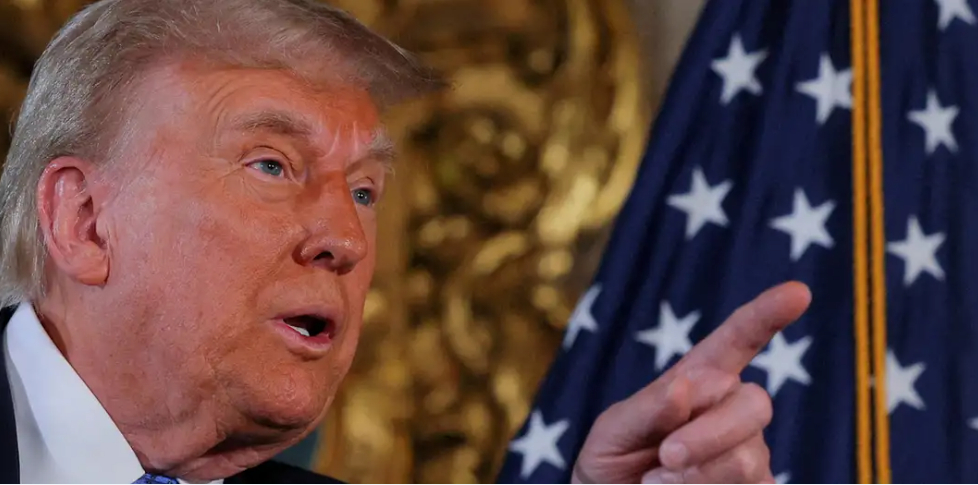
On April 2, 2025, local time, US President Trump announced the implementation of the "America First Tariff Plan", imposing a 10% basic tariff on all imported goods and an additional 25%-50% tariff on key areas such as steel and semiconductors. This policy marks that the United States has once again used tariffs as a weapon to reshape the global economic and trade landscape since the trade war in 2018. However, at a time when the global supply chain has not been fully repaired after the COVID-19 pandemic and the artificial intelligence revolution has reshaped the industrial landscape, what strategic intentions are hidden behind this tariff gamble?
Trump's new tariff policy is not a simple resurgence of trade protectionism, but serves two core goals: First, through tariff barriers, multinational companies are forced to move their production lines back to the United States to solve the supply chain vulnerability problems exposed by the epidemic. Data shows that the US manufacturing repatriation index reached 37% in 2024, but key components still rely on the East Asian supply chain. The new policy is obviously trying to force companies to localize production through cost pressure. Second, tariffs have become a "national security tool", especially the imposition of high tariffs on strategic industries such as semiconductors and rare earths, which is intended to cut off the supply chain of competitors such as China, and cooperate with the US subsidy policy in the field of chip manufacturing in recent years to build a "de-risked" industrial system.
The economic impact of tariff policies is obviously dualistic. On the one hand, consumers will directly bear the cost of tariff transfer. Goldman Sachs predicts that basic tariffs will push the US CPI index up by 2.3 percentage points, while the price increase of high-tariff industries such as energy and automobiles may exceed 15%. On the other hand, the manufacturing industry has gained breathing space. Boston Consulting Group research shows that if the tariff policy continues for three years, the proportion of US manufacturing output value is expected to increase from 11% to 15%, and about 1.8 million new jobs will be created. But this optimistic expectation is based on two assumptions: whether domestic production capacity can fill the import gap and whether allies will tolerate US unilateralism.
Trump's tariff stick has once again stirred up the international order. The European Union has launched the WTO dispute settlement mechanism and threatened to impose retaliatory tariffs on products such as Boeing and Tesla; China has countered through RMB devaluation and rare earth export controls. What is more alarming is that the United States is trying to reshape global trade rules through "tariff diplomacy" - embedding "national security review" into the tariff collection mechanism, which is essentially politicizing economic issues. This unilateral action may accelerate the decline of the WTO, promote the fragmentation of regional trade agreements, and form an "economic iron curtain" oriented by values.
Behind the tariff policy reflects the profound political division in the United States. Trump harvested blue-collar votes with the slogan "Make America Great Again", but Wall Street financial capital and Silicon Valley technology giants suffered losses due to the obstruction of the global supply chain. The latest polls show that 68% of Republican voters support the tariff policy, while opponents are concentrated in the Democratic camp. This political polarization phenomenon is exactly the chess game that Trump has carefully laid out for his re-election in 2028 - diverting domestic conflicts by creating external crises and consolidating his populist base.
Looking back at history, the 1930 Smoot-Hawley Tariff Act triggered a global tariff war, causing international trade to shrink by 66%, becoming an important driving force for the Great Depression. The current US trade deficit has expanded from $678 billion in 2020 to $830 billion in 2024, but the Trump administration clearly values short-term political gains rather than economic rationality. If this beggar-thy-neighbor policy is not effectively checked and balanced, it may drag the global economy into the abyss of the "tariff spiral" and eventually backfire on the United States itself.
Trump's new tariff policy is by no means a simple adjustment of trade policy, but a strategic projection of the United States to reshape the global order. When tariffs are transformed from economic tools to political weapons, it will not only bring about the reconstruction of the industrial chain and the redistribution of benefits, but may also trigger domino effects such as geopolitical conflicts and the failure of global governance. In this war without gunpowder, whether the United States can find a balance between protectionism and globalization will determine the survival of its hegemonic status and will also affect the common well-being of human society.

Since 2022, the Fed has cumulatively reduced its balance sheet by $2.4 trillion through quantitative tightening (QT) policies, leading to a near depletion of liquidity in the financial system.
Since 2022, the Fed has cumulatively reduced its balance sh…
On December 11 local time, the White House once again spoke…
Fiji recently launched its first green finance classificati…
Recently, the European Commission fined Musk's X platform (…
At the end of 2025, the situation in the Caribbean suddenly…
The U.S. AI industry in 2025 is witnessing a feverish feast…